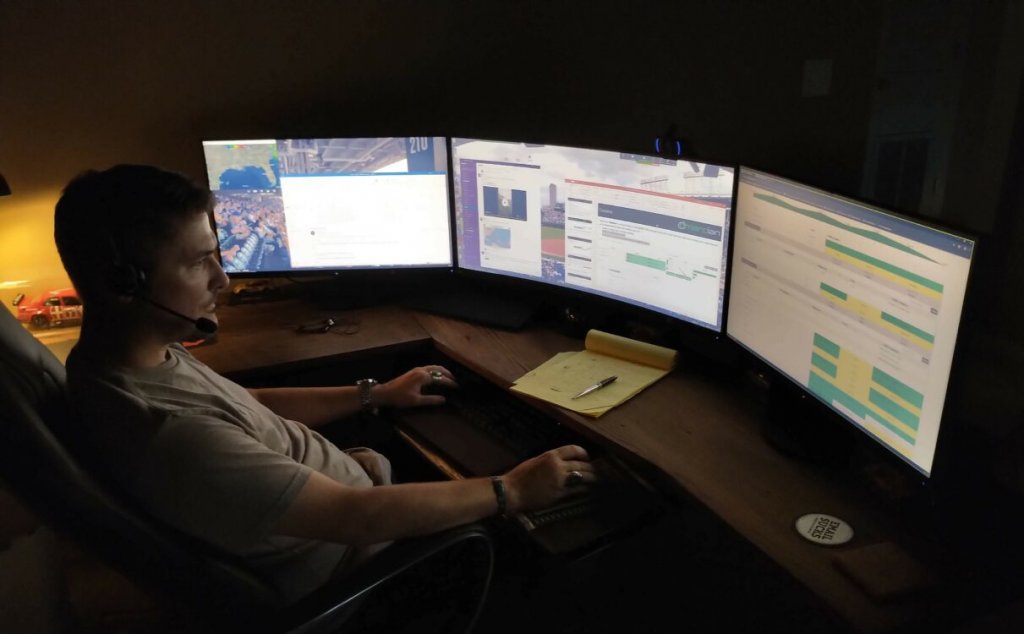
Working Remotely: Four Insights
Working remotely is increasingly becoming an option for employees, with forty percent more employers offering flexible workplace options than they did five years ago in the U.S. alone*. dmarcian Deployment Consultant Fred Bianchi talks about his experience transitioning to a Remote-First environment.
After spending most of my career working in an office, working remotely has been a new experience. Because a remote workforce is a rapidly growing trend and becoming commonplace, I thought I’d share some insights I’ve gained since working for dmarcian, a remote-first company.
A set routine helps with discipline
If you don’t feel like self-discipline is your strength, you should move through a self-assessment to determine if working remotely is right for you. Though it isn’t suitable for everyone, with a certain amount of preparation, nearly anybody can do it; for me, routines are key.
In my previous positions, I had routines. I had a routine before work, a routine at work and a routine after work. While working from home, you should still have your routines. It can be something as simple as setting an alarm so that you can do the morning things that you used to do, like having a cup of coffee, answering emails, watching the news—whatever it may be.
One of my routine priorities is to go outside for a walk around the block during the work day in order to reset. I think anyone who has ever worked in an office before has looked forward to taking a lunch break. It is important to be mindful about taking breaks while working remotely.
Your workspace should be intentional
While at my previous job, I had a minor surgery that required recovery time at home, and I spent around six weeks working from the kitchen table. I had my monitor and keyboard set up just like I would at my normal desk, but it was invading my kitchen table. Then I started resenting my house; when I was in my family room watching television, I would look over and see the monitors on my kitchen table. That contradictory scene didn’t allow me to have a sense of separation between work and my personal space. I was constantly being reminded that there was this connection to my house and my job. When I would come home, it often felt like I was going to the office—it was a constant source of stress.
You need to have a dedicated space so when you leave work, you can mentally leave work behind in that space. It’s important physiologically because people can maintain a familiar routine of going to work; for the remote workforce, an area of the home is usually reserved for your office (and there’s a tax write-off!). You’re going to your job, just like you would before, and your commute is a lot shorter.
I converted an area of my house that was collecting a lot of stuff, a storage area more or less, to my workspace. I cleaned it out, painted the walls, got a proper desk and chair; the transformed room became my designated work station. It gives me the feeling of being at an office.
Don’t isolate yourself
One of my important routines is talking to people. When you work remotely, it’s important to continue to interact with people in ways that are available to you—connecting on the phone, by instant messaging, video conferencing, or anything you have at your disposal to maintain connections with coworkers. Even though they’re not right there next to you, you still need to preserve and cultivate as much interaction as you can and not isolate yourself.
When working remotely, it’s as important as ever to collaborate. With the tools we have to communicate with each other—Slack, ClickUp, email, messaging, conference calls—I don’t feel isolated. Even though I know that there’s not another dmarcian employee for six hundred miles from where I sit, it doesn’t feel like that.
The only time it was tricky was the first couple of months because any time you start a new job, you get to know people, their personalities, their idiosyncrasies. That part is a bit more of a ramp-up than you might typically experience in an office; when working remotely, you have to be more intentional about connecting with people. However, as you ramp that up, you’re getting to know everybody in the company, not just people in what would typically be your immediate vicinity.
Often there are opportunities to meet your coworkers at offsite events, trade shows and conferences. You shouldn’t underestimate the value of spending some face time with your colleagues when you do have the chance.
Make sure you check out at the end of the day
When you’re finished with work at a regular office job, what’s your routine? You shut your computer off, turn off your desk light, get up and go home. Some people might linger, spend a couple minutes surfing the internet, perhaps. Working remotely, you should still do those little things that signal the end of the day—a way to mark the transition from your professional headspace back into your personal life. Find your decompression routine and stick with it so you can maintain work-life balance.
Final thoughts
Though I’ve merely scratched the surface here, I hope my remote-working insights will help those of you who, like me, are new to the remote scene. Advancements in digital tech have made it possible for effective remote work, which provides benefits for companies and its employees. With some forethought and planning, you can make working from home (or wherever you are) comfortable, convenient and even more productive than you would be in an office setting.
Thanks for reading.Want to continue the conversation? Head over to the dmarcian Forum.


